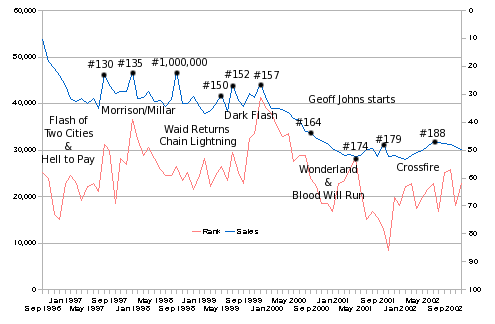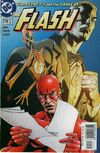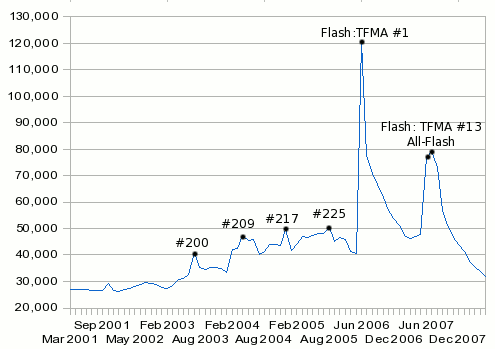ICv2 has posted August sales estimates, and the overall market is down for the seventh month in a row. Worse, Flash #243 dropped below 30,000 units for the first time in 5½ years, selling just 29,647 copies. That was Flash #196 (March 2003), half-way through Geoff Johns’ storied run on the book, just before the Blitz storyline and the slow rise from 30K to 50K by the end of Rogue War.
02/2008: Flash #237 — 37,719 (- 9.0%)
03/2008: Flash #238 — 35,606 (- 5.6%)
04/2008: Flash #239 — 33,741 (- 5.2%)
05/2008: Flash #240 — 31,944 (- 5.3%)
06/2008: Flash #241 — 30,810 (- 3.6%)
07/2008: Flash #242 — 30,325 (- 1.5%)
08/2008: Flash #243 — 29,647 (- 2.2%)
(Link via The Beat.)
Last month, it looked like sales were leveling out near 30,000 — right where most of Geoff Johns’ original run hovered. But they dropped more between July and August than they did between June and July. No doubt the announcement that Flash would be rebooted didn’t help, as readers decided to wait until the relaunch instead of reading a “lame duck” title.
Final Crisis: Rogues’ Revenge #2 fared better, but still dropped 12.9% from its first issue.
07/2008: Rogues Revenge #1 — 62,482
08/2008: Rogues Revenge #2 — 54,404 (- 12.9%)
The Beat’s analysis of July’s sales was underwhelmed with Rogues’ Revenge’s performance, opining:
The notion that not even Geoff Johns’ commercial Midas touch can reignite interest in The Flash, for that matter, suggests that what the franchise needs right now, above all, is some rest.
Only time will tell, but I expect that the next few months of Flash sales are going to be dismal, even if the quality of the Alan Burnett/Paco Diaz/Carlo Barberi arc turns out to be stellar.



